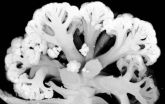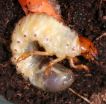(Press-News.org) Washington, D.C.— An international team of scientists, including Carnegie's Paul Butler, has discovered that Tau Ceti, one of the closest and most Sun-like stars, may have five planets. Their work is published by Astronomy & Astrophysics and is available online.
At a distance of twelve light years and visible with a naked eye in the evening sky, Tau Ceti is the closest single star with the same spectral classification as our Sun. Its five planets are estimated to have masses between two and six times the mass of the Earth--making it the lowest-mass planetary system yet detected. One of the planets lies in the habitable zone of the star and has a mass around five times that of Earth, making it the smallest planet found to be orbiting in the habitable zone of a Sun-like star.
The international team of astronomers, led by Mikko Tuomi from the University of Hertfordshire, combined more than six-thousand observations from three different instruments and applied intensive modeling to the data. Using new techniques, the team found a method to find signals half the size previously thought possible, which greatly improves the sensitivity of searches for small planets and suggests that Tau Ceti is not a lone star but has a planetary system.
"We pioneered new data modeling techniques by adding artificial signals to the data and testing our recovery of the signals with a variety of different approaches," Tuomi said. "This significantly improved our noise modeling techniques and increased our sensitivity to find low mass planets."
Tau Ceti was chosen for this noise-modeling study because the team thought it had no signals and would be a good benchmark system to test their methods for planet detection. This is particularly true because it is so bright and similar to our own Sun. It's also one of Earth's nearest cosmic neighbors, so scientists could be able to learn about the atmospheres of these planets in the not-too-distant future.
More than 800 planets have been discovered orbiting other worlds, but planets in orbit the around the nearest Sun-like stars are particularly valuable for research.
"We are now glimpsing for the first time the secrets of our nearest companion stars and their previously hidden reservoirs of potentially habitable planets," Butler said. "This work presages the time when we will be able to directly see these planets, and search them for water, carbon dioxide, methane, and other signposts of life."
### The work herein is based in part on observations obtained at the W. M.Keck Observatory, which is operated jointly by the University of California and the California Institute of Technology.
This research is supported by Planets Around Cool Stars, a Marie Curie Initial Training Network funded by the European Commission's Seventh Framework Programme. Fondecyt, Centro de Astrofísica, the GEMINI-CONICYT FUND, the Comit´e Mixto ESO-GOBIERNO DE CHILE, the NSF, the Australian government.
The Carnegie Institution for Science (carnegiescience.edu) is a private, nonprofit organization headquartered in Washington, D.C., with six research departments throughout the U.S. Since its founding in 1902, the Carnegie Institution has been a pioneering force in basic scientific research. Carnegie scientists are leaders in plant biology, developmental biology, astronomy, materials science, global ecology, and Earth and planetary science.
Closest sun-like star may have planets
2012-12-19
ELSE PRESS RELEASES FROM THIS DATE:
NTU study finds ways to prevent muscle loss, obesity and diabetes
2012-12-19
A research study from Nanyang Technological University (NTU) has yielded important breakthroughs on how the body loses muscle, paving the way for new treatments for aging, obesity and diabetes.
The study found that by inhibiting a particular molecule produced naturally in the body, muscle loss due to aging or illnesses can be prevented. Blocking the same molecule will also trigger the body to go into a 'fat-burning mode' which will fight obesity and also treat the common form of diabetes.
The exciting discoveries have led NTU scientists to embark on joint clinical research ...
Successful results against human leishmaniasis with a more efficient and economic vaccine
2012-12-19
A research coordinated by the UAB has succeeded in testing a vaccine against leishmaniasis. The vaccine was tested with the best animal model existing, the golden hamster, and can be produced at low costs by using insect larvae. The research, published in the latest edition of PLoS ONE, is an important step towards the fight against a disease which causes the death of 70,000 people each year in developing countries and of countless dogs, which also suffer from this disease and are its natural reservoir.
Leishmaniasis is one of the main health problems existing at global ...
A mathematical formula to decipher the geometry of surfaces like that of cauliflower
2012-12-19
This press release is available in Spanish.
VIDEO:
This is a cauliflower.
Click here for more information.
The scientists have found a formula that describes how the patterns found in a multitude of natural structures are formed. "We have found a model that describes, in detail, the evolution in time and in space of cauliflower-type fractal morphologies for nanoscopic systems", explains ...
Geo-engineering against climate change
2012-12-19
Numerous geo-engineering schemes have been suggested as possible ways to reduce levels of the greenhouse gas carbon dioxide in the atmosphere and so reduce the risk of global warming and climate change. One such technology involves dispersing large quantities of iron salts in the oceans to fertilize otherwise barren parts of the sea and trigger the growth of algal blooms and other photosynthesizing marine life. Photosynthesis requires carbon dioxide as its feedstock and when the algae die they will sink to the bottom of the sea taking the locked in carbon with them.
Unfortunately, ...
Better approach to treating deadly melanoma identified by scientists
2012-12-19
Scientists at The University of Manchester have identified a protein that appears to hold the key to creating more effective drug treatments for melanoma, one of the deadliest cancers.
Researchers funded by Cancer Research UK have been looking at why new drugs called "MEK inhibitors", which are currently being tested in clinical trials, aren't as effective at killing cancer cells as they should be.
They discovered that MITF - a protein that helps cells to produce pigment but also helps melanoma cells to grow and survive - is able to provide cancer cells with a resistance ...
Fast-acting enzymes with 2 fingers: Protein structurally and dynamically explained
2012-12-19
Researchers at the RUB and from the MPI Dortmund have uncovered the mechanism that
switches off the cell transport regulating proteins. They were able to resolve in detail how the central switch protein Rab is down-regulated with two "protein fingers" by its interaction partners. The structural and dynamic data is reported by the researchers led by Prof. Dr. Klaus Gerwert (Chair of Biophysics, RUB) and Prof. Dr. Roger S. Goody (Max Planck Institute for Molecular Physiology, Dortmund, Germany) in the Online Early Edition of the journal PNAS. "Unlike in the cell growth protein ...
Badger sleeping habits could help target TB control
2012-12-19
Scientists found that badgers which strayed away from the family burrow in favour of sleeping in outlying dens were more likely to carry TB.
The 12-month study of 40 wild badgers was funded by the Department for Environment, Food and Rural Affairs (Defra) and could have implications for the management of bovine TB in parts of the UK. The behaviour of individual animals is thought to be a key factor in how the disease is spread among animals and livestock. The new findings could help to understand and develop measures to manage TB in badgers.
The study is published ...
The role of the innate immune cells in the development of type 1 diabetes
2012-12-19
The researchers reveal the role of the innate immune cells, especially the dendritic cells, that cause the activation of the killer T-lymphocytes whose action is directed against the p pancreatic cells. The results obtained in mice make it possible to consider new ways of regulating the auto-immune reaction generated by the innate immune cells.
Type 1 diabetes, or insulin-dependent diabetes, is an auto-immune disease characterised by the destruction of insulin-producing pancreatic β cells that are present in the Islets of Langerhans which are themselves in the pancreas. ...
Not without my microbes
2012-12-19
Apart from the common European cockchafer (Melolontha melolontha), the European forest cockchafer (Melolontha hippocastani) is the most common species of the Melolontha genus. These insects can damage huge areas of broadleaf trees and conifers in woodlands and on heaths. Cockchafers house microbes in their guts that help them to digest their woody food, such as lignocelluloses and xylans. Scientists of the Max Planck Institute for Chemical Ecology in Jena, Germany, have now performed comprehensive RNA analyses and identified the microbiota of cockchafer larvae feeding on ...
Scale-up of a temporary bioartificial liver support system described in BioResearch Open Access
2012-12-19
New Rochelle, NY, December 19, 2012—Acute liver failure is usually fatal without a liver transplant, but the liver can regenerate and recover if given time to heal. A bioartificial liver machine that can provide temporary support while organ regeneration takes place has been scaled up for testing in a large animal model and is described in an article in BioResearch Open Access, a bimonthly peer-reviewed open access journal from Mary Ann Liebert, Inc., publishers. The article is available on the BioResearch Open Access website .
A team of researchers from University College ...



